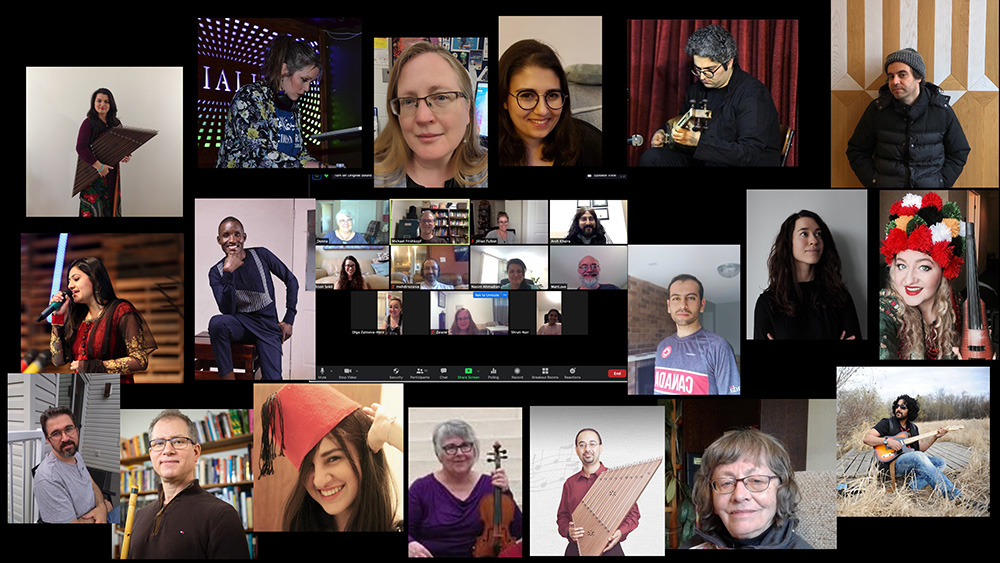International artists create music from blended genres
Erik Einsiedel - 01 October 2020

What happens when a vocalist from India combines her Malayalam song with the jazz stylings of a Canada-based musician? Or when an audio producer in Kenya applies his African influence to create a new arrangement of a Ukrainian folk song?
The answer can be found in a series of new music tracks created by the TranceCultural Orchestra (TCO), now available on their Bandcamp page. The TCO is a COVID-19 era development of the live, face to face music presented for the past three years by the Edmonton TransCultural Orchestra (ETO), founded by UAlberta professor of music and ethnomusicologist Michael Frishkopf.
TCO and ETO are socio-musical initiatives of the Canadian Centre for Ethnomusicology, using collective musical performance and creation to bridge the cultural separations that divide us.
This collective approach to making music begins with one person contributing the initial track, which Frishkopf calls “the root.” It is passed on to another TCO member who would add their own layer to the track, and so on. As it evolved, the track could make its way around the world, between TCO members based in Kenya, Germany, Iran, the USA and Canada.
“The idea behind TCO was to make it very open so anybody could contribute anything, and others could respond to it in any way they wanted,” says Frishkopf. “When you record and upload a track, you just can’t predict which way it’s going to go.”
This openness, flexibility and unpredictability is what distinguishes TCO’s online process from traditional music production, which typically involves a predetermined music score or vision.
“The silver lining of not being able to play together synchronously, in real time, is that it gives you a chance to think,” Frishkopf explains. “When you receive someone’s recording, you can sit there and ponder how you might respond to it musically.”
This is especially helpful in such cases where the music genres are very distinct from each other, and the artists may be very unfamiliar with each other’s genres.
“One person might do Indian music, another one does blues, and another one does classical. How are we all going to meet on a common ground? But because you’re working with music tracks asynchronously, you have time to reflect and consider more carefully what you want to add,” Frishkopf explains.
Currently, Frishkopf is developing a virtual reality (VR) space where visitors can experience TCO’s music in a completely immersive environment. He describes it as a “sonic exhibition” which allows people to hear the different tracks depending on their position in the space. It also enables interaction with other visitors in real time, using speech or chat, while listening to the same music.
“TCO extends the idea of music as a medium for connecting under lockdown,” Frishkopf says. “It’s not just about the music itself, or creating music individually. It’s also about music generating a social space, people gathering together to talk about music, discussing how to make music, how to use available technologies, and to share musical ideas, techniques and visions.”
For the full listing of tracks from the TranceCultural Orchestra, visit their Bandcamp page here. You can also explore their virtual reality site here, with helpful tips on how to move within the space here. Read more about both the Edmonton Transcultural Orchestra and the TranceCultural Orchestra here.